Libby's Backyard Wildlife Habitat
WELCOME
Welcome to my Backyard Wildlife Habitat. I’m Libby- Come along with me on my backyard adventures in South Carolina with Birds, Bees, Butterflies, Flowers, and more!

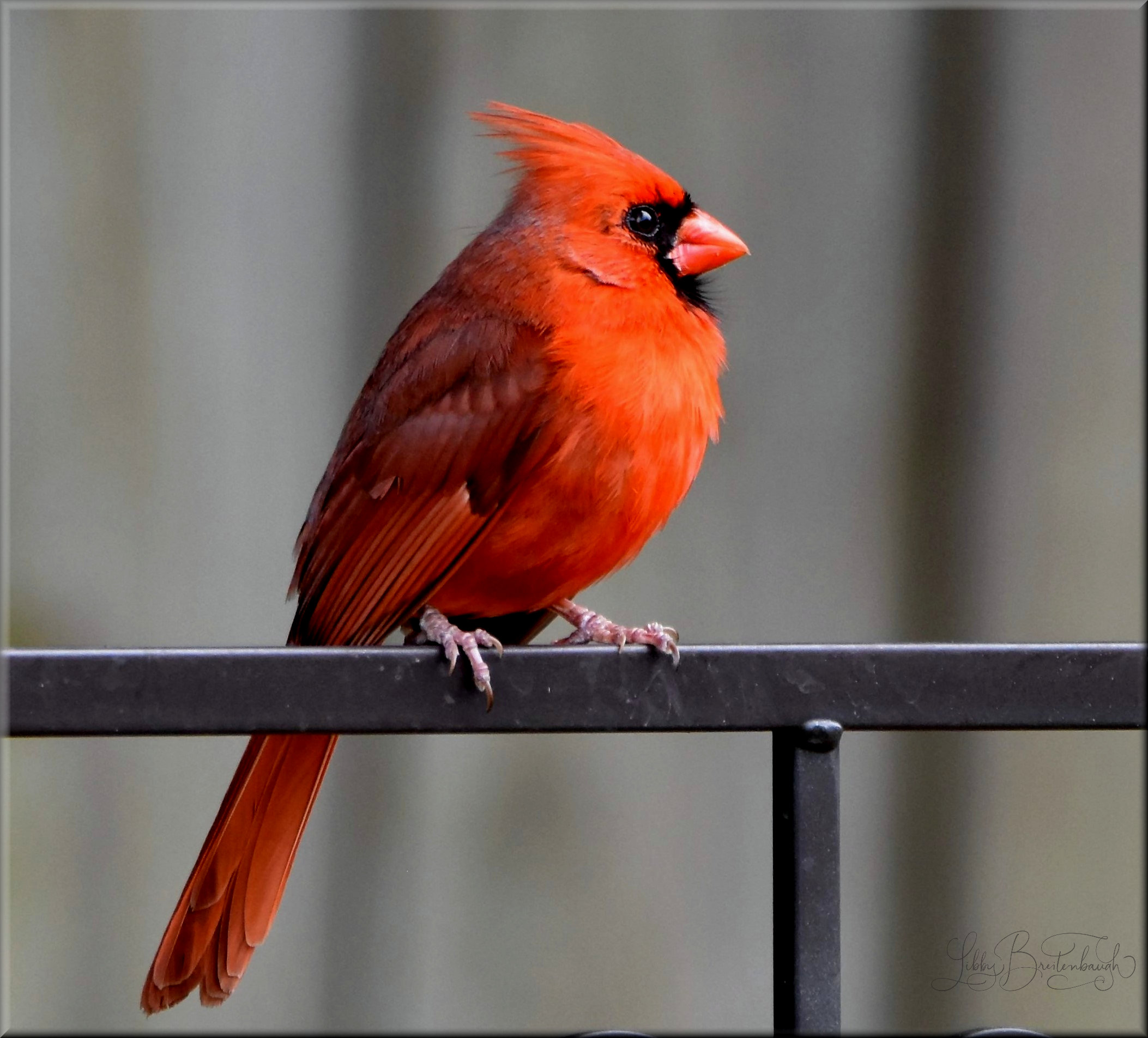
Male Northern Cardinal (Cardinalis cardinalis)
Northern Cardinals are the most frequently spotted birds in South Carolina and are residents of the state all year.
One of our most popular birds, the Cardinal is the official state bird of these seven states: Illinois, Indiana, Ohio, Kentucky, Virginia, West Virginia and North Carolina. Cardinals were named after the early Catholic cardinal colonists who came to America in their crimson red robes and red skull caps. That’s why when northern cardinals flock together, they’re called a Vatican. In winter their flocks can reach up to about 70 birds!)
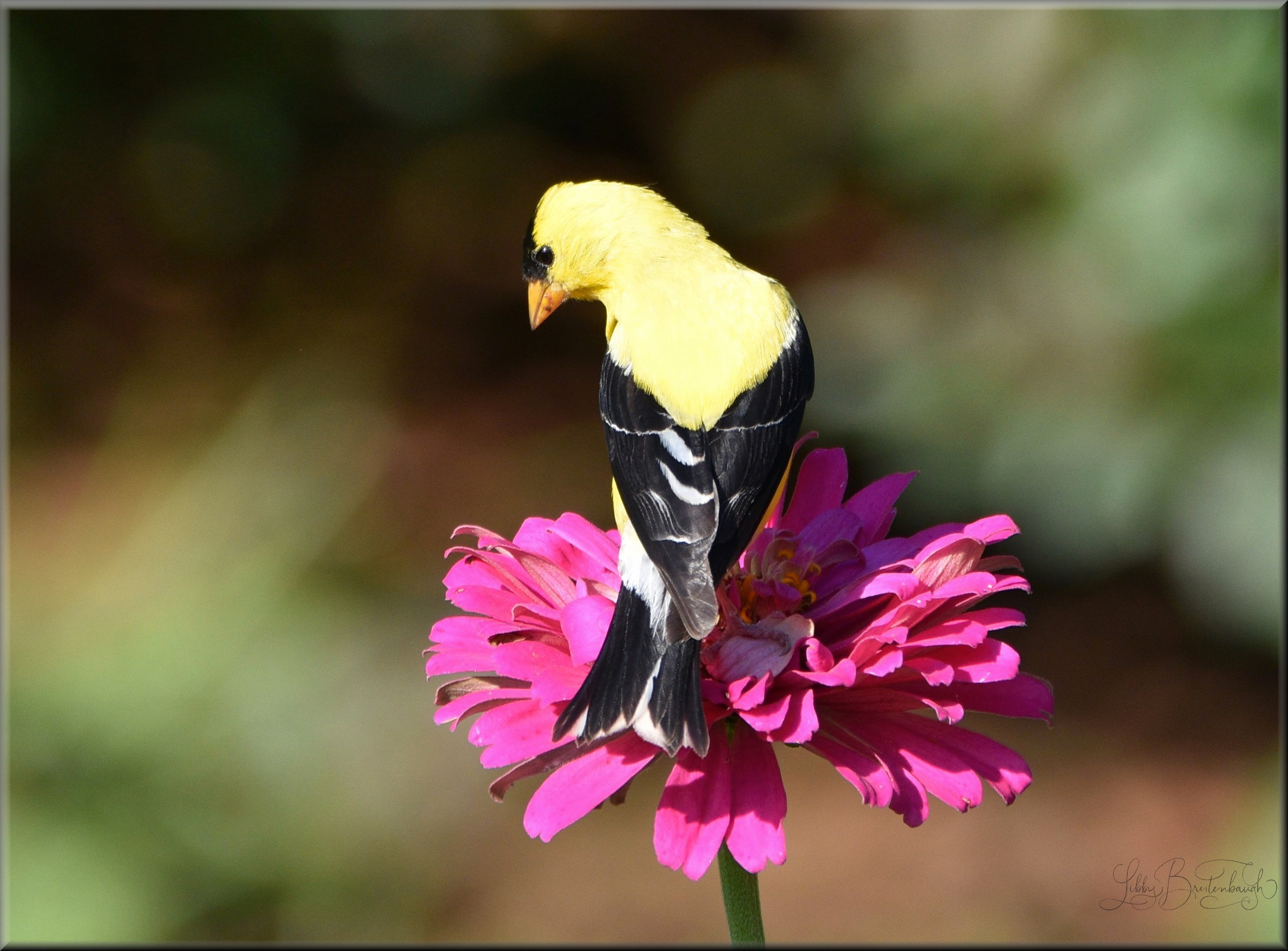
Male American Goldfinch (Spinus tristis)
The American Goldfinch is the state bird of New Jersey, Iowa, and Washington. They are the only finch that molts its body feathers twice a year, once in late winter and again in late summer. American goldfinches eat a plethora of seeds. Goldfinches are foragers and find food by hovering around potential food plants to determine which has the most resources. When one is chosen, the bird will perch on the plant and begin collecting and eating seeds from the seed head.

Carolina Chickadee (Poecile carolinensis)
John James Audubon named this bird while he was in South Carolina. The curious, intelligent Carolina Chickadee looks very much like a Black-capped Chickadee, with a black cap, black bib, gray wings and back, and whitish underside. Where the two species ranges come in contact, the Carolina and Black-capped chickadees occasionally hybridize. Hybrids can sing the songs of either species or might sing something intermediate.
.
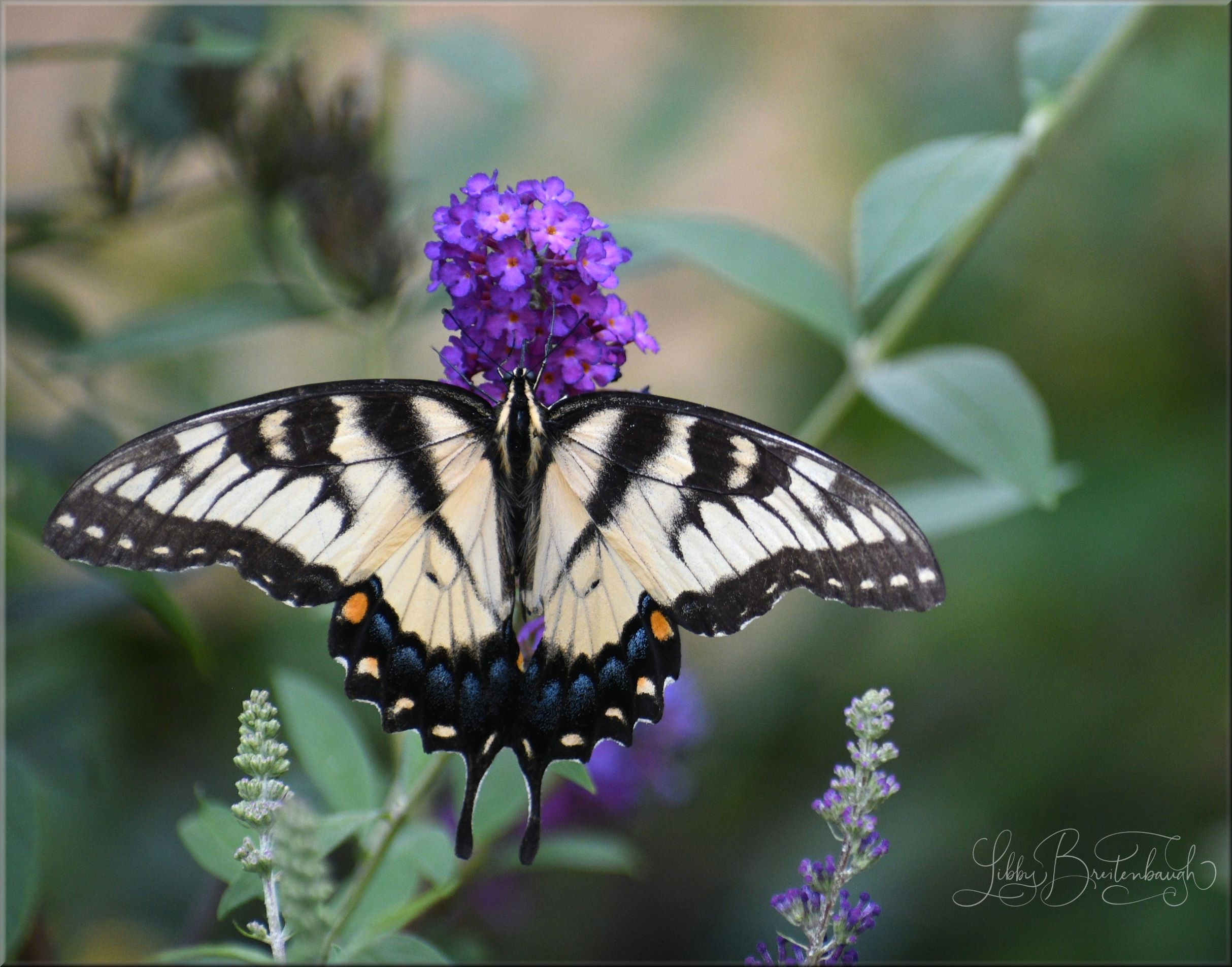
Eastern Tiger Swallowtail Butterfly (Papilio glaucus)
South Carolina State Butterfly- The Eastern Tiger Swallowtail (Papilio glaucus). Governor Carroll Campbell signed into law on March 29, 1994. The earliest evidence of the butterfly in South Carolina came from the brush of the English naturalist Mark Catesby, who sojourned in the Lowcountry in the 1720s. Engravings of Catesby’s watercolors of the tiger swallowtail appeared in his Natural History of Carolina, Florida, and the Bahama Islands (1732–1743).
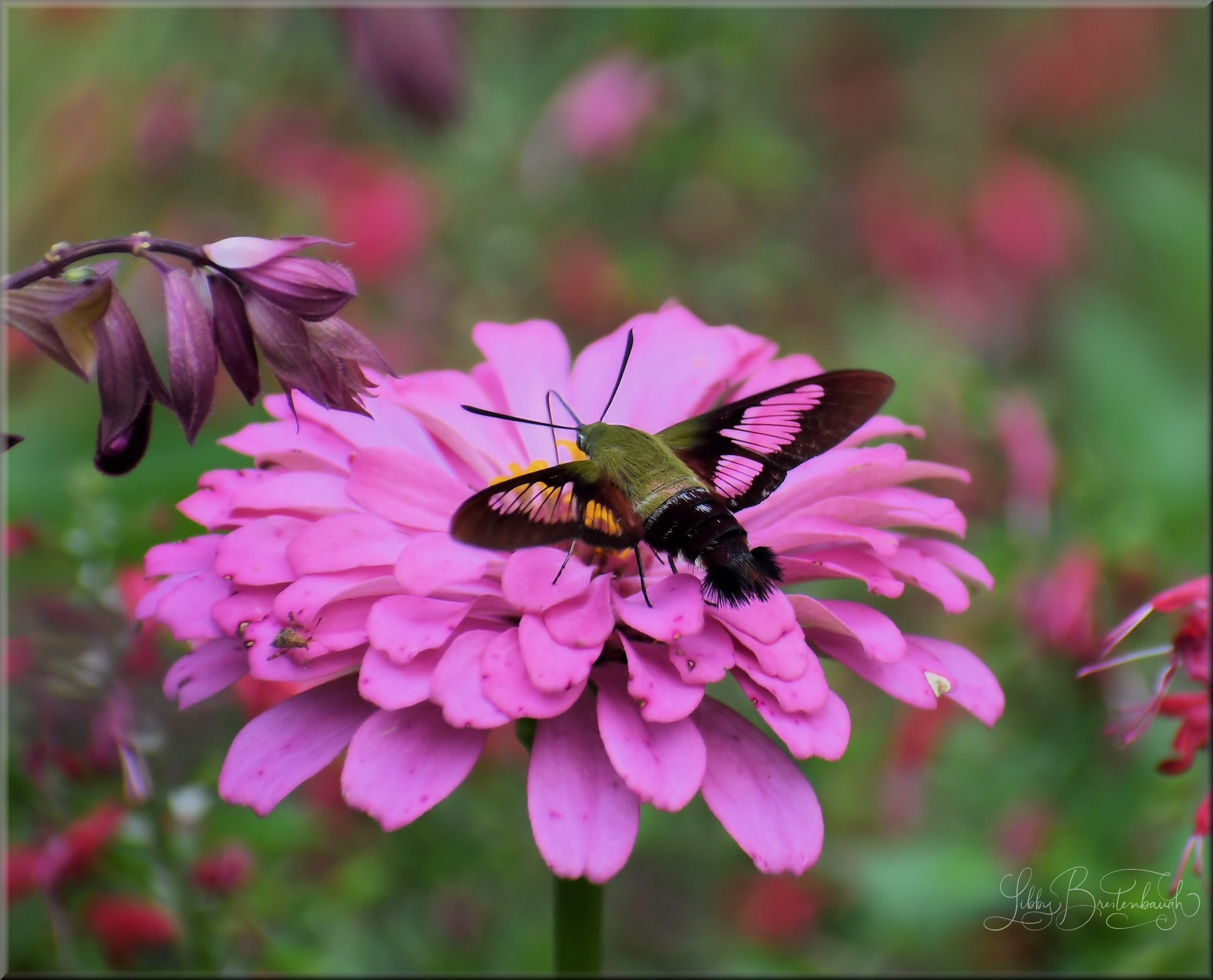
Hummingbird Clearwing Moth (Hemaris diffinis)
Hummingbird Moths are members of the sphinx moth family (Sphingidae), which have heavy bodies and long front wings. The wings of hummingbird moths are clear, with a black or brown border, and are nearly invisible when they fly. Males have a flared “tail” like that of a hovering hummingbird. They fly during the day and can be found in a wide variety of habitats, including open meadows, forest edges, and suburban gardens. Hummingbird Moths feed on the nectar of flowers, hovering with the body stationary, its transparent wings beating so fast as to be nearly invisible, and a long proboscis protruding beaklike into the blossom.
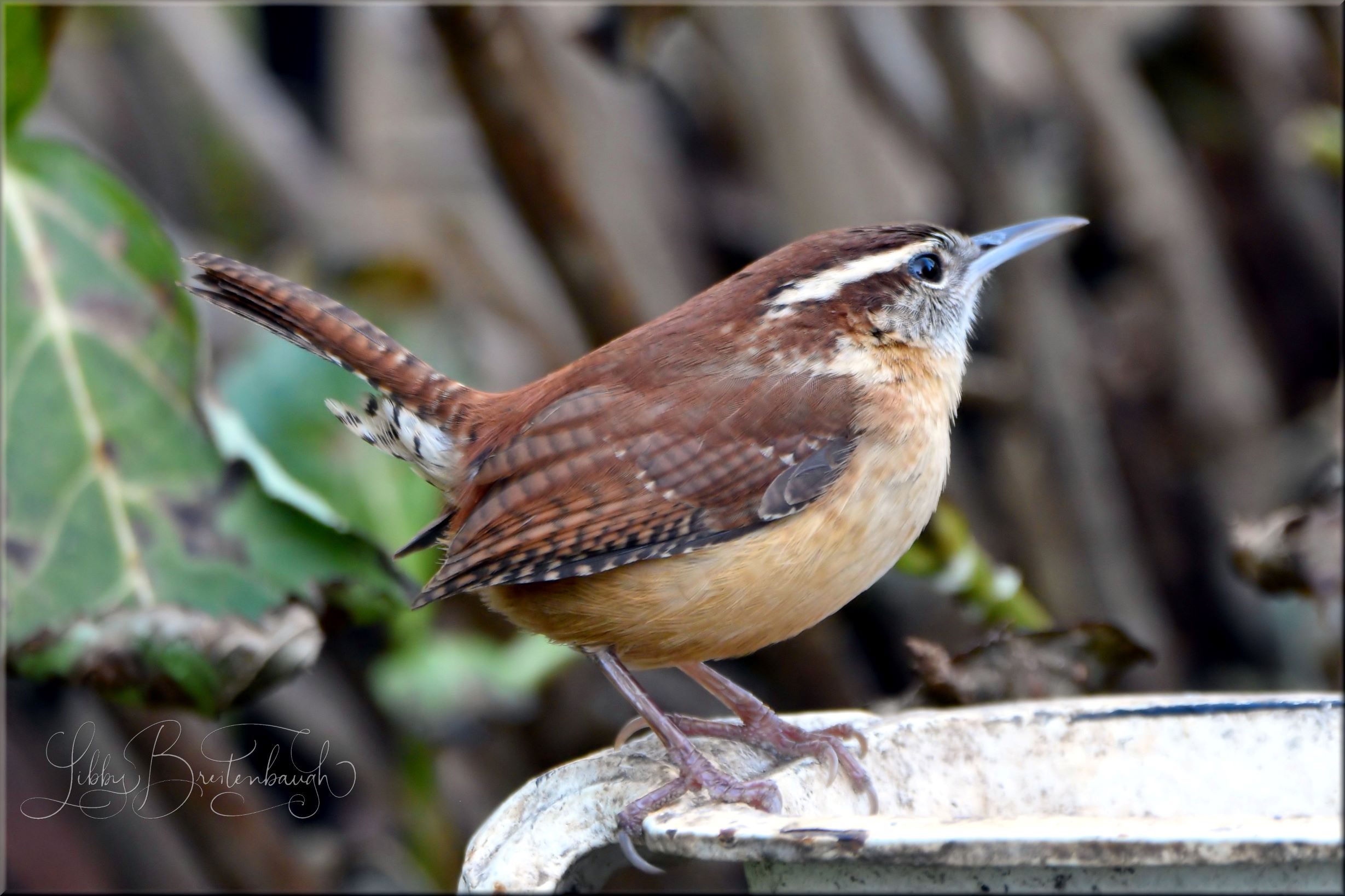
The Carolina Wren (Thryothorus ludovicianus)
The South Carolina State Bird- The Carolina Wren (Thryothorus ludovicianus). It was adopted as the official state bird with the signing of an act by Governor Strom Thurmond on April 3, 1948. The Carolina Wren lives year-round in South Carolina. The Carolina Wren was not the first official state bird of South Carolina. The first South Carolina state bird was the Northern Mockingbird. The General Assembly selected it in 1939 and made it the official state bird in Act 311.
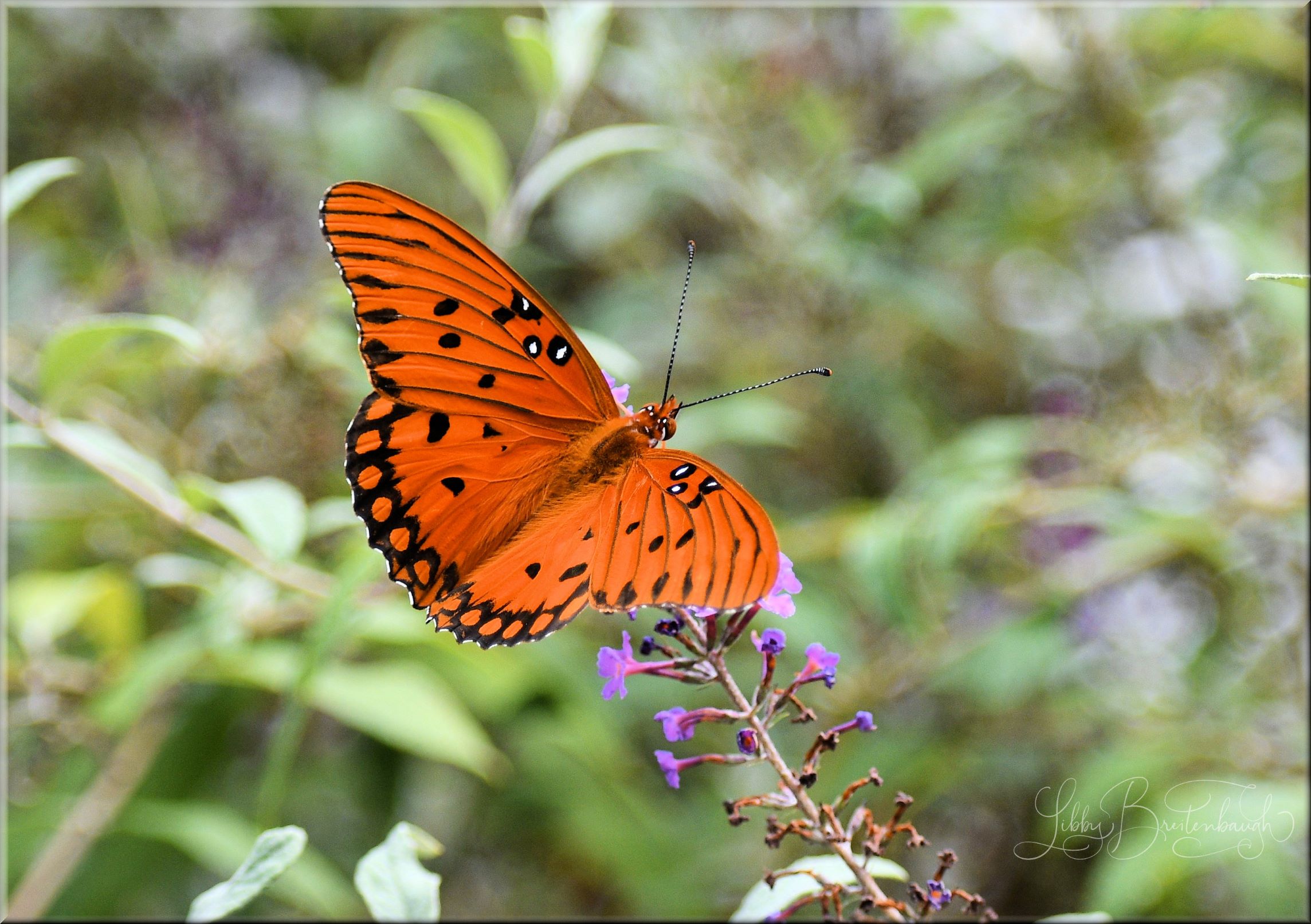
Gulf Fritilliary Butterfly (Agraulis vanilla)
The Gulf Fritillary Butterfly, Agraulis vanillae (Linnaeus), also known as the Passion Butterfly is a brightly colored butterfly common across extreme southern portions of the United States. Despite its name, the Gulf Fritillary is not a true Fritillary. True Fritillaries belong to the Nymphalidae sub-family Nymphalinae, whereas the Gulf Fritillary is in the sub-family Heliconiinae. Nectar and host plants used by the Gulf Fritillary are passionflower, maypop, and corky-stemmed passionflower.
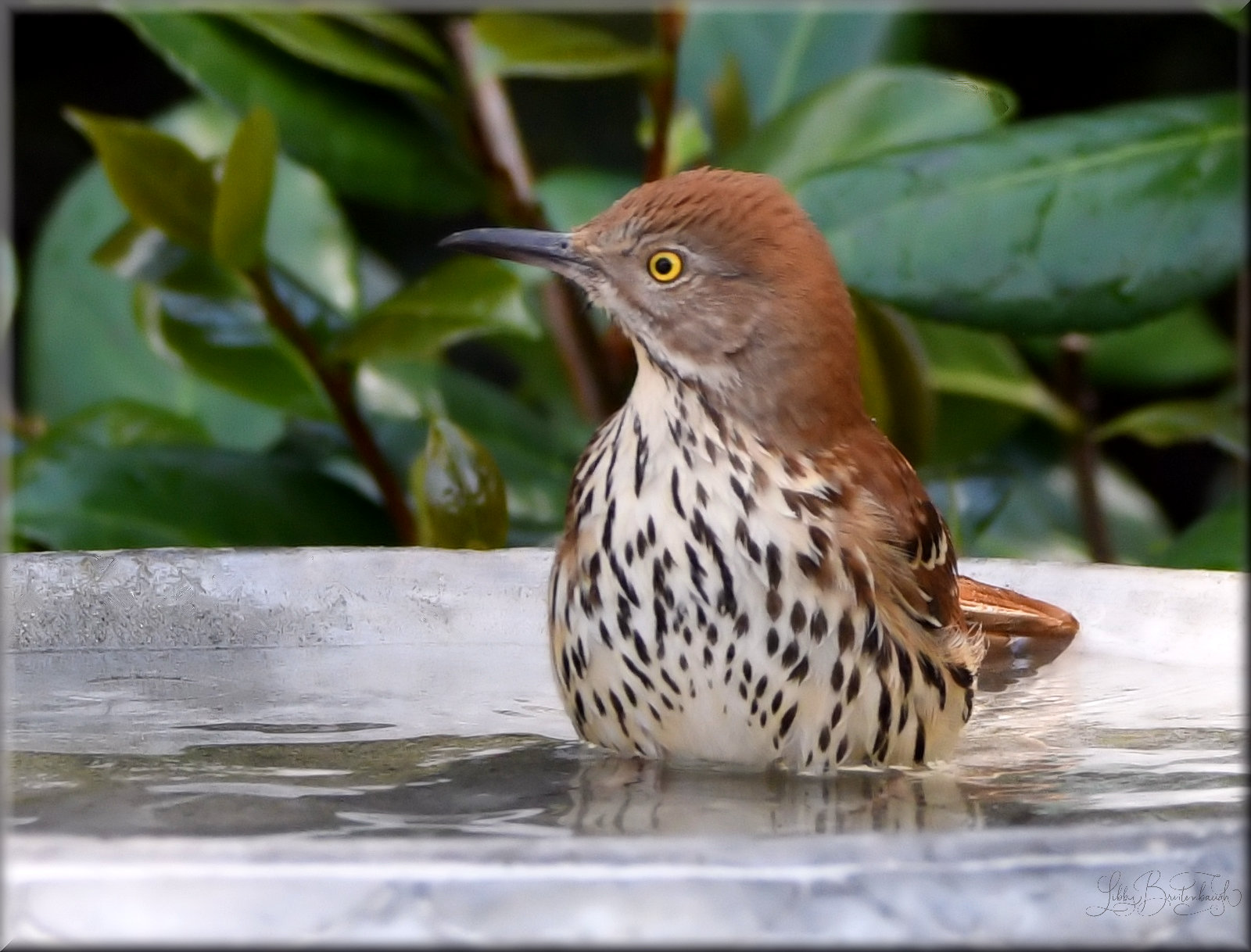
Brown Thrasher (Toxostoma rufum)
Piercing yellow eyes, slightly curved beak, holds its long tail feathers up. The Georgia State Bird. The Brown Thrasher (Toxostoma rufum), sometimes erroneously called the brown thrush or fox-colored thrush, is a bird in the family Mimidae, which also includes the New World catbirds and mockingbirds. The brown thrasher is abundant throughout the eastern and central United States and southern and central Canada, and it is the only thrasher to live primarily east of the Rockies. Brown thrashers are excellent songsters and mimics and can sing more than 1,000 melodies.
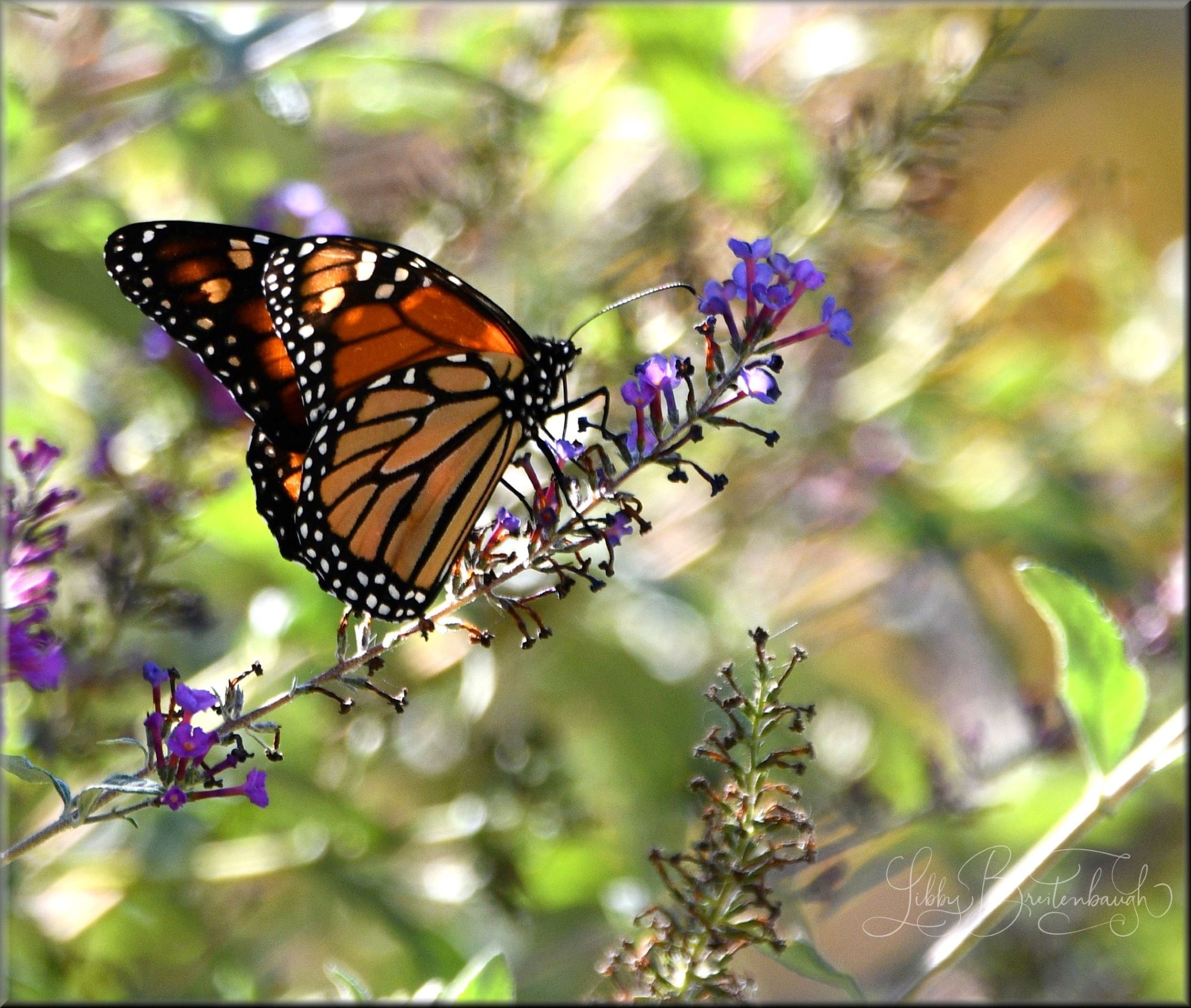
Monarch Butterfly (Danaus plexippus)
The orange-and-black butterfly is known for its annual, multi-generational migration from Mexico to as far north as Canada. Monarch butterflies depend on milkweed to lay their eggs during the journey. But monarch populations have decreased significantly over the past two decades, in part because of the decrease in native plants, including milkweed, on which their caterpillars feed. Agriculture and development have removed much of the native milkweed that once spanned the country. Because monarch butterflies are always on the move, they need to have the right plants at the right time along their migration route. Caterpillars need to feed on milkweed to complete their life cycle, and adult butterflies need the right nectar producing plants in bloom for needed energy.
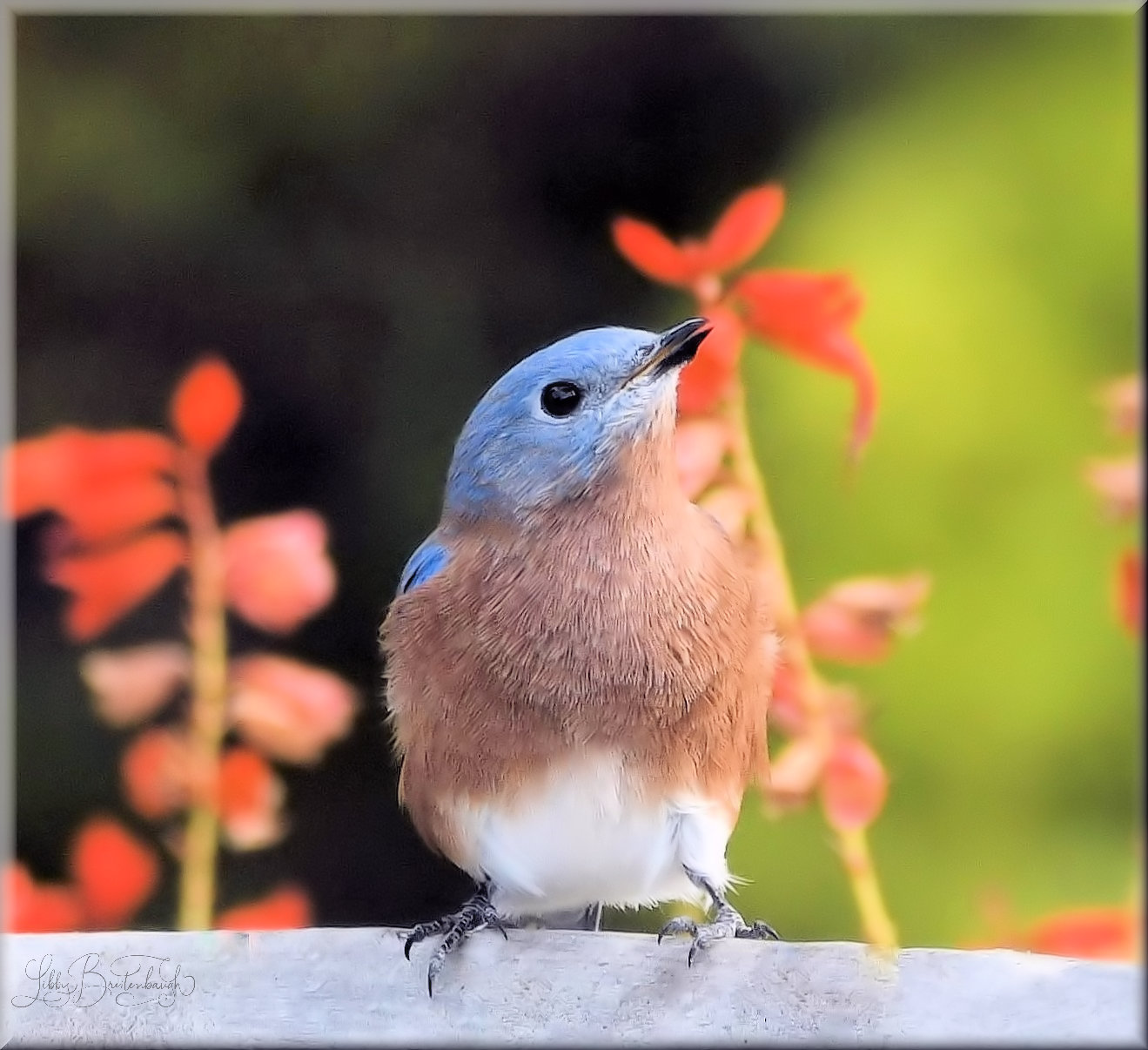
Eastern Bluebird (Sialia sialis)
The Eastern Bluebird is a small thrush with a big, rounded head, large eyes, plump body, and alert posture. Bluebirds were popular with early American colonists and associated with the coming of spring. They were referred to as the ‘blue robin’ because of their resemblance to the European robin. Missouri and New York are the two states that are represented by the eastern bluebird as their official state bird. A Bluebird’s diet is made up of insects such as crickets, grasshoppers, and beetles, with fruit added, especially during the winter. Bluebirds also love mealworms, sunflower seeds, and suet, and will readily visit feeders for them.
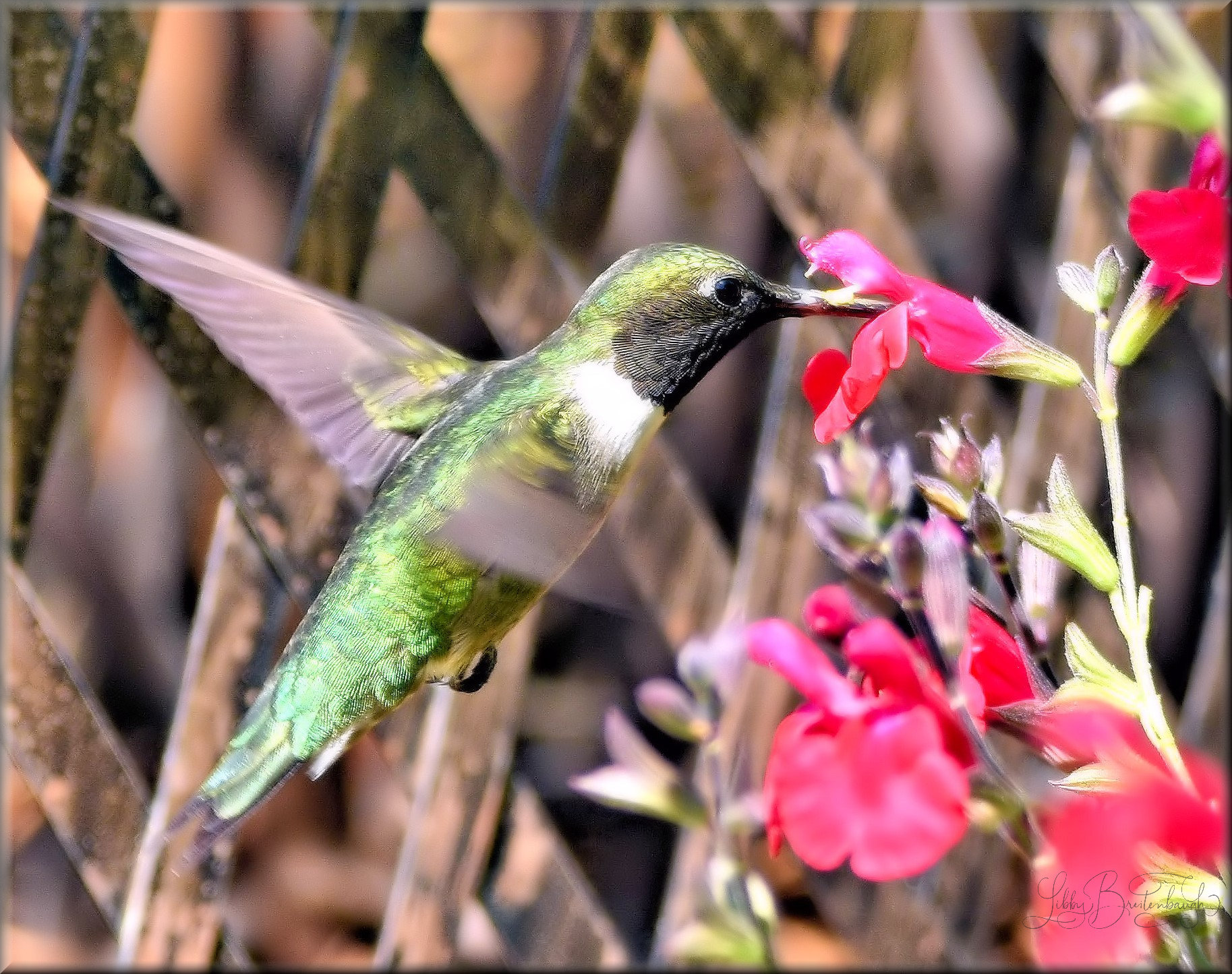
Ruby-throated Hummingbird (Archilochus colubris)
Ruby-throated Hummingbirds are eastern North America’s only breeding hummingbird. But in terms of area, this species occupies the largest breeding range of any North American hummingbird. Ruby-throated hummingbirds spend their summers throughout the eastern United States. In autumn, they migrate to their wintering grounds in Central America. Some ruby-throated hummingbirds are known to winter in southern Florida. They prefer habitats where there are a lot of flowers, such as fields, parks, backyards, and open clearings in forests. When Ruby-throated hummingbirds are really exerting themselves, their hearts race around 1,200 beats per minute. In calmer times, that rate drops to 600 beats per minute.
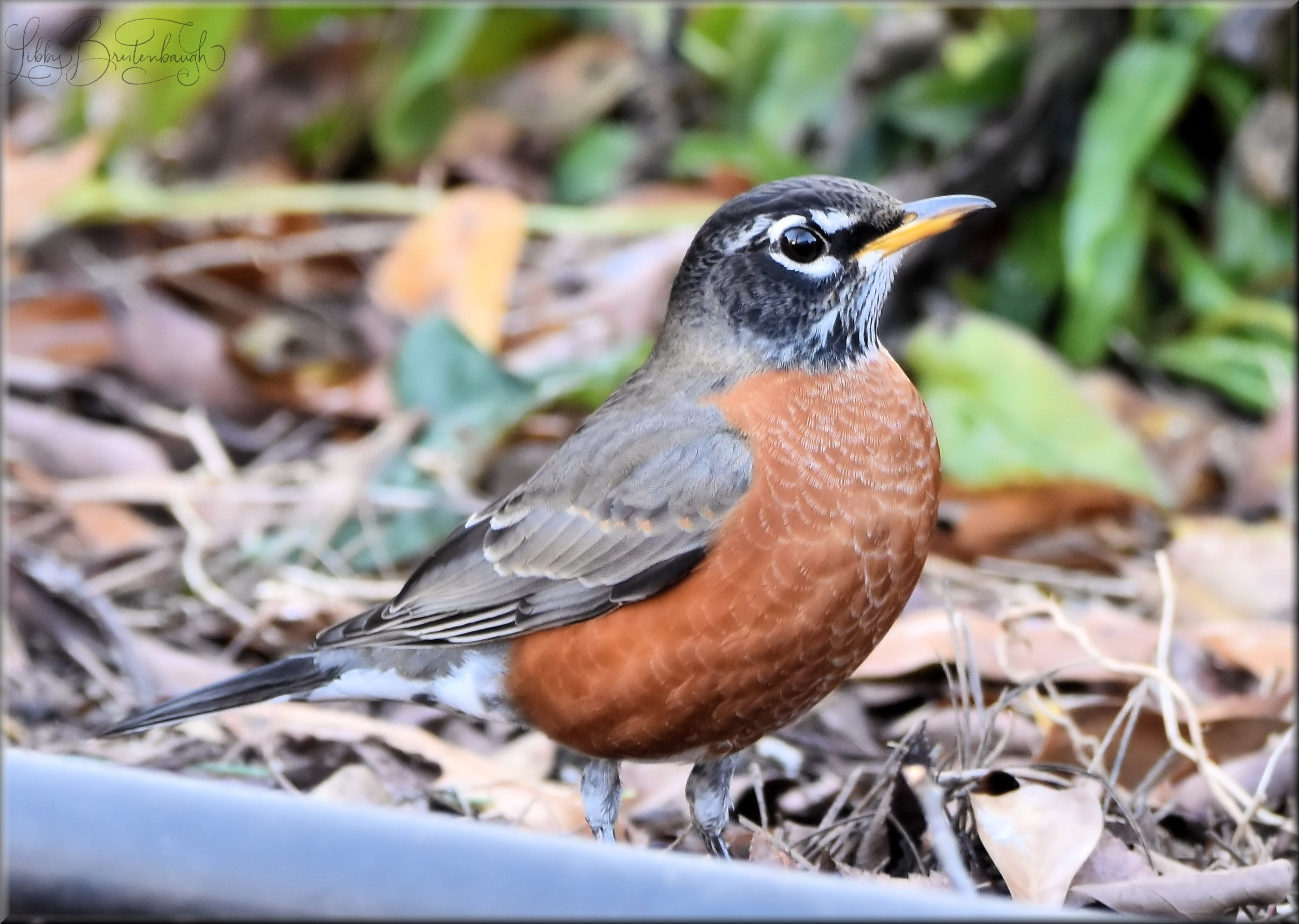
American Robin (Turdus migratorius)
The American robin got its name when English settlers in the New World saw in it a reflection of the bird they knew as the Robin in the old country. Adult robins have a magnetic compass in their right eye that allows them to sense the direction of the Earth’s magnetic field and navigate when all other landmarks are obscured. Baby robins have two such compasses, one in each eye. They lose the left one as they grow up. State bird of Connecticut, Michigan, and Wisconsin. The American robin is considered a symbol of spring. If you have ever seen a robin laying its eggs, one thing might have left you puzzled. Why do red robins lay blue eggs? The reason is that the eggshell has a layer of pigment called biliverdin. This chemical is responsible for the blue color of eggs.